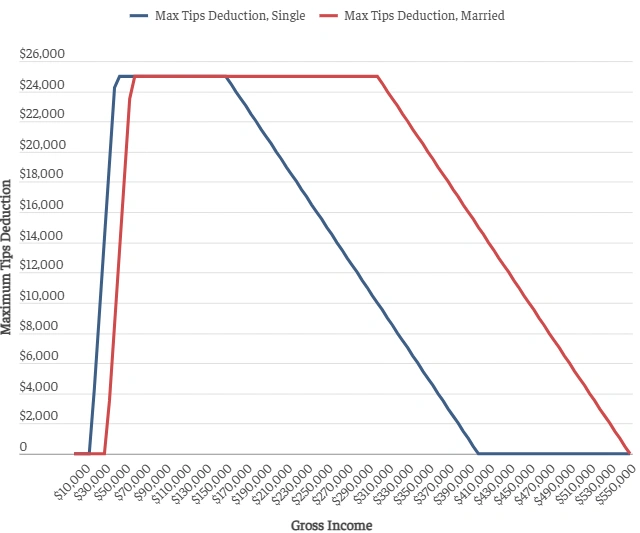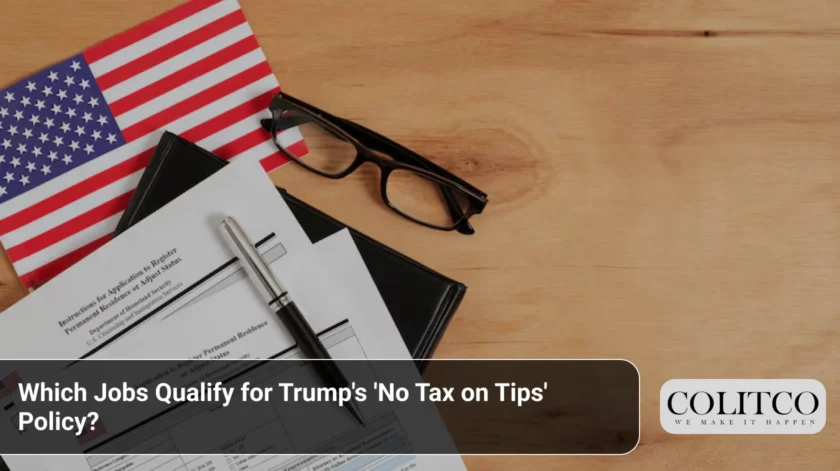President Trump’s campaign promise to eliminate taxes on tips became reality when he signed the “One Big Beautiful Bill” into law in July 2025. Now, millions of workers across America are wondering: does my job qualify for this ‘no tax on tips’ policy?
The Treasury Department recently released the official list of 68 occupations eligible for the “no tax on tips” deduction. The policy allows qualifying workers to deduct up to $25,000 in tips from their federal income taxes each year through 2028.
Understanding the No Tax on Tips Policy
The legislation creates a federal income tax deduction specifically for tip income. Workers can claim this deduction regardless of whether they take the standard deduction or itemise their returns. However, there are important limitations to understand.
NO TAX ON TIPS 💸
🧵Thanks to President Trump’s One Big Beautiful Bill, thousands of Americans qualify for a new tax deduction. Check out the list below: pic.twitter.com/pPxx4WymJx
— The White House (@WhiteHouse) September 2, 2025
The deduction only applies to federal income taxes – you’ll still owe payroll levies for Medicare and Social Security. State taxes on tips also remain unchanged in most cases. The benefit phases out for single taxpayers earning more than $150,000 and married couples earning over $300,000.
The Complete List: 8 Categories of Eligible Jobs
Treasury Secretary Scott Bessent described the list as “expansive but fair”. The 68 qualified positions fall into eight distinct categories:
| Category | Eligible Jobs |
| 1. Beverage & Food Service | Bartenders, Wait Staff, Food Servers (Non-restaurant), Dining Room and Cafeteria Attendants, Bartender Helpers, Chefs and Cooks, Food Preparation Workers, Fast Food and Counter Workers, Dishwashers, Host Staff (Restaurant, Lounge, Coffee Shop), Bakers |
| 2. Entertainment & Events | Gambling Dealers, Gambling Change Persons and Booth Cashiers, Gambling Cage Workers, Gambling and Sports Book Writers and Runners, Dancers, Musicians and Singers, Disc Jockeys (except radio), Entertainers and Performers, Digital Content Creators, Ushers, Lobby Attendants, Ticket Takers, Locker Room, Coatroom and Dressing Room Attendants |
| 3. Hospitality & Guest Services | Baggage Porters and Bellhops, Concierges, Hotel, Motel and Resort Desk Clerks, Maids and Housekeeping Cleaners |
| 4. Home Services | Home Maintenance and Repair Workers, Landscapers, Electricians, Plumbers, Heating and AC Mechanics and Installers, Appliance Installers or Repairers, Home Cleaning Workers, Locksmiths, Roadside Assistance Workers |
| 5. Personal Services | Dog Walkers, Pet Sitters, Personal Care Professionals |
| 6. Personal Appearance & Wellness | Hairstylists, Barbers, Manicurists, Pedicurists, Massage Therapists, Skincare Specialists |
| 7. Recreation & Instruction | Golf Caddies, Sports and Recreation Instructors, Fitness Trainers |
| 8. Transportation & Delivery | Taxi Drivers, Rideshare Drivers, Food Delivery Workers, Package Delivery Personnel, Valet Parking Attendants |
Surprising Inclusions and Notable Exclusions
Some occupations on the list might raise eyebrows. Social media influencers, podcasters and other digital content creators made the cut, reflecting the modern tipping economy. The policy also covers party DJs and home electricians who customarily receive gratuities.
However, those in the healthcare, performing arts and athletic fields will not qualify for the deduction. The Treasury Department designed these restrictions to prevent high-paid professionals from restructuring their compensation as tips to avoid taxation.
How Much Could Workers Save?
Among tipped workers who make enough to owe federal taxes, the average tax cut would be about $1,800, according to the Urban-Brookings Tax Policy Center. For many service workers, this represents meaningful relief from their annual tax burden.
Consider a bartender earning $40,000 annually with $5,000 in tips. Under the new policy, they could deduct the entire tip amount from their taxable income, potentially saving hundreds of dollars in federal taxes each year.
Market Reality: Tips Are Declining
The policy arrives during challenging times for tipped workers. During the second quarter of 2025, the average tip across restaurants, cafes and bars was 14.99%, down from 15.17% the prior quarter, according to Square’s latest report.
Consumer behaviour is shifting too. About 41% of Americans said that “tipping is out of control” in 2025, up from 25% last year, according to Bankrate. This “tipping fatigue” means workers might be earning less in gratuities just as tax relief becomes available.
Critics Raise Important Concerns
Not everyone supports the policy. Only 2.5 percent of the workforce work in tipped occupations, and only 5 percent of workers in the bottom 25 percent of earners do, according to Yale Budget Lab research. This means the vast majority of low and middle-income workers won’t benefit.
“There is no real economic merit to the idea,” said Bill Gale, co-director of the Urban-Brookings Tax Policy Center. “It’s not a good way to help low income workers because the vast majority of low-income workers don’t get tips“.

Tips Deduction Doesn’t Benefit Some Low-Income Taxpayers, and Phases Out for Higher Earners
The Economic Policy Institute warns the policy could encourage harmful employer practices and lead to tip requests in virtually every consumer transaction. There are also concerns about wealthy professionals finding ways to reclassify their income as tips.
Implementation Timeline and Next Steps
The deduction takes effect immediately for the 2025 tax year. Workers can claim the benefit when they file their 2025 taxes in early 2026. The IRS must publish the final occupation list in the Federal Register by 2nd October 2025.
Employers will need to report eligible tips on Forms W-2 for employees and Forms 1099 for contractors. The Treasury Department is updating tax withholding procedures to help workers see the benefit in their regular paychecks rather than waiting until tax season.
A Limited But Meaningful Change
Only about 3% of households will benefit from the deduction in 2026, and they will receive a tax break of $1,400, on average. While the policy won’t revolutionise the tax system, it provides targeted relief for service workers who rely on customer generosity.
According to the non-partisan Joint Committee on Taxation, the tips deduction will cost $32 billion over 10 years (fiscal years 2025-2034). If Congress makes the provision permanent beyond 2028, costs would rise significantly.
What Workers Need to Know
If your job appears on the Treasury list, you’ll need to track your tip income carefully. Tips must be reported on Form W-2, Form 1099, or Form 4137 to qualify for the deduction. Only “qualified tips” – voluntary cash or charged tips received from customers or through tip sharing – count toward the $25,000 annual limit.
The policy represents a significant shift in how America taxes service workers. Whether it becomes a permanent feature of the tax code will depend on future political decisions and its effectiveness in helping working families.
For now, millions of tipped workers have something new to consider when planning their finances: a potential tax break that acknowledges the unique challenges of earning income through customer generosity.











